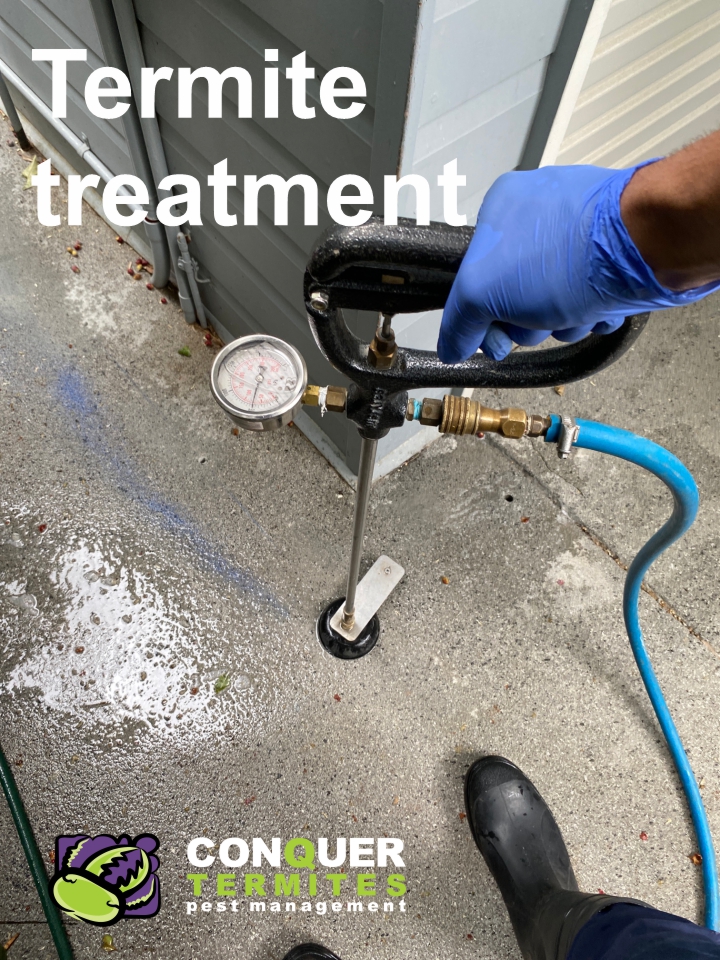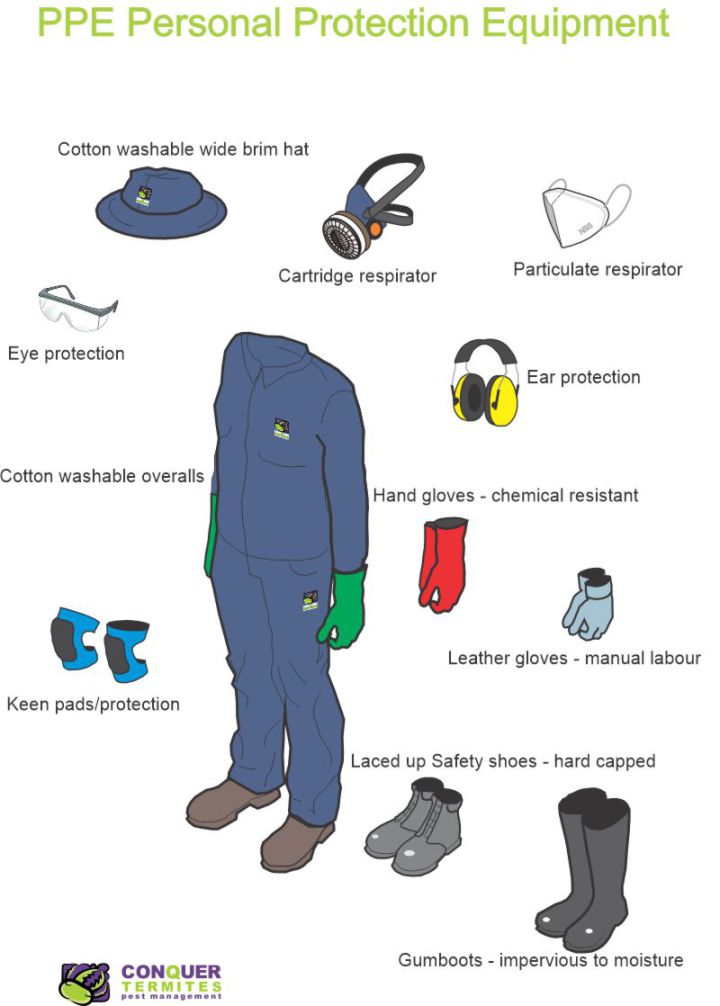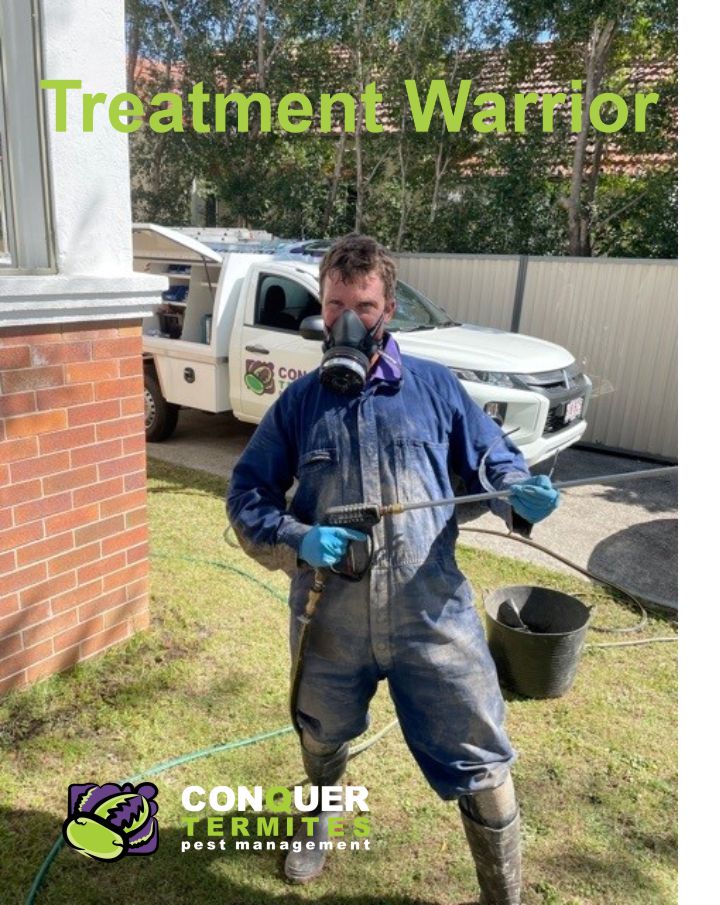Can I treat my house for termites?
In Australia, the homeowner can buy and apply termiticide to their home. It’s your castle and it should have a moat to stop termites.
But if you charge for applying a termite treatment, you need the appropriate licenses and insurance.
Things to consider when treating your home
You typed in the search ‘DIY to treat my home for termites’, so we won’t say not to. But let us give you some facts to consider why you shouldn’t and why you should seek a licensed professional.
Can you buy the right chemical? What chemical is safe to use around your home?
The termite treatment chemical you can buy from Bunnings or a Produce store is a generic formulation of the recognised industry brands.
If you are buying Termidor online, you are buying an illegal product that is old and probably been sourced overseas. BASF, the manufacturer of Termidor, does not allow the sale of Termidor to the general public.
Do you know how and where to apply the termite treatment?
- On an average-sized house, you need to apply 100’s of litres of termiticide.
- How do you mix the chemical in bulk with water? Doing it by buckets is crazy!
- The treatment must be applied continuously around the building. Otherwise, the termites will gain concealed entry from under the concrete slab or along the footings.
- All registered termiticides must be applied to loam-type soil in a mixed solution. Not to clay or stones.
- You need to ensure the trenches you dig are down to the footings, and at least 150mm wide, and all trees and roots need to be removed.
- Where you have concrete paths or driveways, you need to drill 12mm holes every 300 - 400 mm (or to the manufacturer’s instructions) and inject the chemical under pressure (35 psi) with an appropriate injection tool, so it disperses in a 360-degree pattern.

A more potent mix and more ‘juice’ is not better
Don’t be tempted to mix stronger than the manufacturers’ instructions thinking it will work better and longer. When applied, it needs to bond and disperse in the soil as the chemistry formulation requires.
Remember, more chemical is not better; it’s how and where it is applied.
Personal safety
You should wear the PPE requirement as specified on the bottle - gloves, full-length cotton overalls, eye protection and respirator when applying and mixing the termiticide.
Remember, you are personally liable if the chemical you are handling poisons a neighbour’s pet or runs into stormwater.

Insurance and documentation
If you treat your home, there is no warranty, insurance and treatment documentation. So if you plan to sell, you can’t prove or pass on anything. It would lessen the home’s value as it would be deemed a dodgy job and have no value.
Peace of mind
If you go ahead and do the treatment yourself, be prepared to lay awake at night with a nagging thought, ‘Have I really stopped the termites? Are the termites back’?
Otherwise, you have to be super vigilant and keep checking constantly.
How a termite treatment should be done
It’s the Aussie way - we get it
There are many things that you must love about the Australian male. One of their most endearing characteristics is their desire to do things themselves. I’m not talking about the sissy urban pursuit of purchasing a flat pack from Ikea and arming himself with an Allen key. No, I’m talking about serious stuff like installing a chemical treatment around his home to stop termites (white ants).
Case study on how not to treat a house for termites
We recently treated a house in Capalaba where the owners found live termites in the bathroom. Months before we arrived, the man of the house and his father-in-law tried applying chemicals to the outside soil (see attached photo). I am not knocking the spirit of the endeavour; we all love a person that gives it a go; it’s more the misleading delivery of good intent.
They went down to Bunnings and bought a proprietary termite chemical they thought would do the job. The problem is that the repellent type of chemical they purchased is regarded as “yesterday’s chemical”, and no legitimate Termite company would consider using it due to health and performance issues.
Also, the delivery of the chemical was inappropriate but creative. Their way of applying the chemical down a tube seemed a good idea, but it didn’t do the job.





